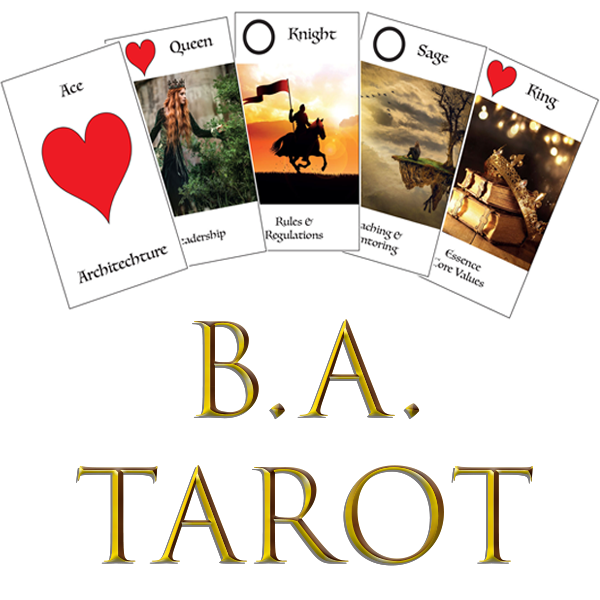
Spades: Conduct

The Ace – Conduct. The Spades suit represents the conduct or actions of the organisation. What the business does and how it communicates. This suit covers the the doing, enabling and planning and monitoring activities. “It ain’t what you do its the way that you do it” Conduct is what you do, and the means by which you deliver. Many organisation consider the customer experience and the customer journey from the customer need to customer acquisition and retention.
Most business is a trade or a promise; “you do this for me and I will do that” businesses can operate on a functional or comodity level with little or no relationship with their customers or they can build a longer standing relationship of trust that breaks the functional relationship and establishes a stronger, long term partnership. (A bit like the difference between a one night stand and a marriage)
In military terms this is logistics, the delivery of the force however in business I have expanded from just doing to communicating the values of the business, setting a promise and then delivering on that promise. It is still logistics but with more around the communication of the promise.
This card is still Conduct in the V3.0 versions.
On the reverse of the card are:
- Customer experience
- Tone of voice and personality of business
- Actions and activity
- Logistics
- Performance and reputation
- Consistency of actions
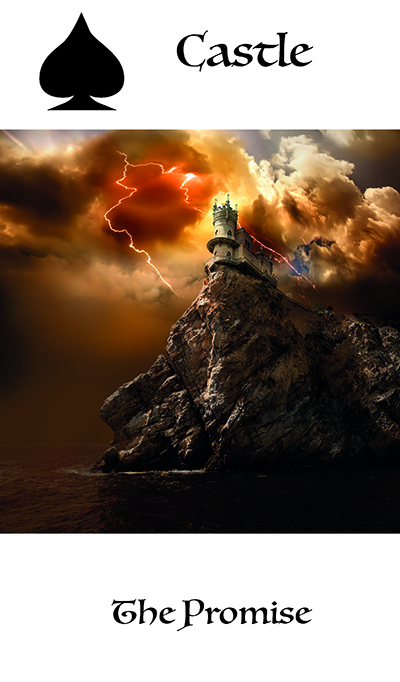
The Castle: The Promise
In the introduction I have mentioned the promise as this is a fundamental part of the suit. In business you promise something, an experience, a product, a service or an experience and organisations need to be clear what that promise is and be confident they know how to deliver it. If the organisation fails to deliver it it is much worse than never promising in the first place.
Marketing functions usually communicate the promise, the experience, the product value or the service offering but this effort is completely pointless if the experience is poor or the product is sub standard or the service offering is unavailable. Marketing only gives an organisation the opportunity to demonstrate to customers how good the product or service is.
Understanding the organisations promise to its customer is the first step, Delivery, and therefore logistics is the second step. (see knight of this suit.)
This card is The Promise in the Mad about CRM and the V3.0 versions.
On the reverse of the card are:
- Promise to business
- Promise to team
- Promise to customer
- Requirements and expectations
- Clear and simple
- Measureable (SMART) Specific, Measurable, Achievable, Realistic, and Timely
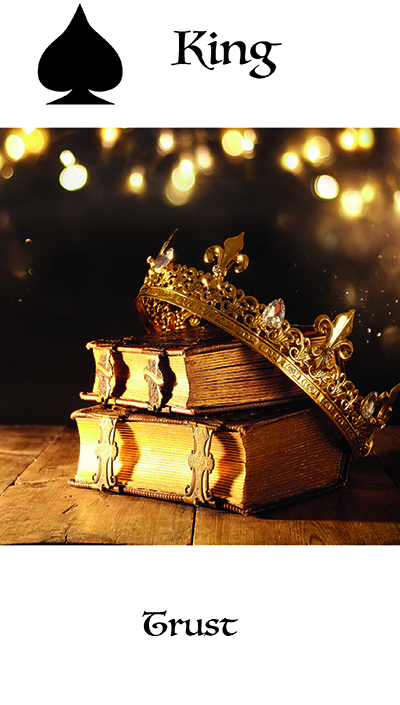
The King: Trust
Trust is fundamental to the organisation without trust at all levels of an organisations and throughout its stakeholders the business has no foundations. Trust and ethical behaviour go hand in hand. Ethics comprise the foundation of your character and cannot be compromised. It is founded within the King of Hearts card. There are no shortcuts when it comes to being trustworthy: Either you do the right thing or you don’t.
Trust in business has two main benefits:
The first is with your clients. If they know you are honest, they are usually willing to work with you even through challenges, and they won’t hesitate to be a referral when things go well.
The second benefit is that authentic collaboration will take root within the organisation. Your people can trust each other to act honourably and to fulfil their defined roles according to shared company values. The earned trust of clients and employees serves as the basis of a strong organisation.
The Original Trust has been replaced with Assurance in the V3.0 versions. This is because trust is one aspect of the assurances, assurance enabled me to include other aspects such as testing into the cards meaning.
On the reverse of the card are:
- Standards and guidelines
- Calibration
- Assessment
- Testing (UAT)
- Responsibilities
- Trust
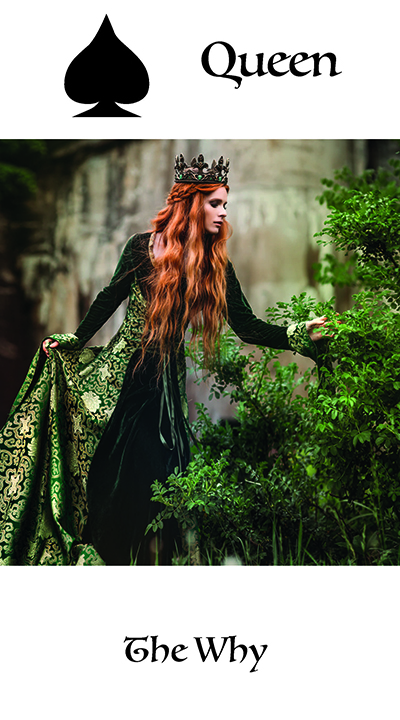
The Queen: The Why
The Queen:Represents “The why?” The function of communicating why the business does what it does. This is the “I believe” Factor. If you haven’t seen Simon Sinek – the Why Check it out now, at last count it had nearly 50M hits so it is very likely you know what I am talking about.
Simon Says “People don’t buy what you do, they buy why you do it!” I would argue that How is also important but the why is a very strong consideration within an organisation.
I was once advising a customer that was trying to implement 5S as part of a lean manufacturing drive and the supervisor was frustrated because the staff were not following procedures correctly. He came to me for advice on discipline and I asked him “why are you doing 5S” and he replied ” I want this department to be the best, most efficient department in the organisation, in fact in the industry” my response was “have you told the staff this?” do they understand your vision. Of course he hadn’t and discipline was his first port of call. He explained his dream with great results – because his staff understood the why.
Although within the 6W cards there is also “why” but this is within the context of actions following the strategy. Communicating the why to staff, customers and other stakeholders embeds the reason for the behaviour or conduct of the organisation.
This card is The Why in the Mad about CRM and the V3.0 versions.
On the reverse of the card are:
- Belief or inspiration
- Alignment
- Reason (What is the point)
- Alternative (what happens if we dont do it?)
- Business case
- Like minded customers.
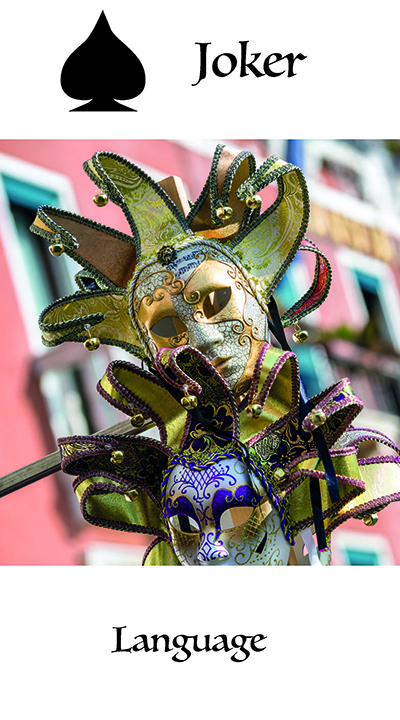
The Joker: Language
Language is very important in communication (obviously). If you trade in a specialist environment you need to speak the language of the customer, inexperience is very often spotted through inappropriate language for the environment. This is as true in social networks and social environments as it is in business. LOL.
The tone of an organisations voice can also impact on how that business is perceived. Is the organisation a friendly cheeky chappie, or an official and formal organisation or Casual and informal. Establishing the language and tone of voice so that everyone understands how the language of the organisation should be presented. Brands and organisations often use archetypes to illustrate the personality of an organisation.
Remember tone of voice is an expression of the people behind the organisation – don’t make them be something that they are not. Good use of language builds trust and is compelling when trying to influence and persuade.
Here is an example:
“ Excuse me: You wouldn’t happen to have a pen I could borrow, would you?”
“Do you have a pen I can borrow?”
“Give me that pen.”
This card represents the fact that “how organisations use language impacts on the perception of the organisation”. (Did you notice an LOL earlier, it felt awkward didn’t it? It was clearly an inappropriate use of informality in the wrong situation.)
The Original Language has been replaced with Communication in the V3.0 versions. this enabled be to add other considerations within the card such as channels and audience.
On the reverse of the card are:
- Internal
- External
- Language (market specific or tone of voice) also Non Verbal Communication
- Consistency
- The audience
- The channel
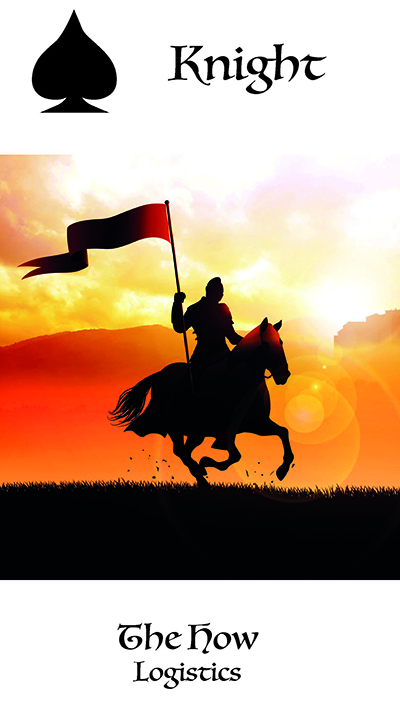
The Knight: Logistics
Many of the other cards in this suit represent communication and making of “The Promise” As I have said earlier delivery and fulfilment of that promise is equally as important as making the promise. There is absolutely no point in establishing “The Why” of an organisation or the tone of voice of an organisation if the fundamental elements of product or service delivery is not in place.
Remember: Many of these delivery functions may even be out of the scope of your organisation however it is your responsibility as the promise-maker to co ordinate the 3rd parties to deliver. That is logistics.
The Military identifies as “Logistics encompasses all activities required to move and sustain military forces. At the tactical level, logistics is combat service support that deals with feeding, fuelling, arming, and maintaining troops and equipment. Tactical logistics involves the actual performance of the logistic functions of supply, maintenance, transportation, health services, general engineering, and other services.”
I have put the key elements of value proposition as reminder of logistical considerations on the reverse of the Triangle suit. These are: Functionality, Price, Quality, Choice, and Availability. (oh and image and reputation)
The Original Logistics has been replaced with Method in the V3.0 versions. Methodologies, processes and techniques contribute to the logistics of an organisation or project but I felt that logistics was often visualised as “shipping” rather than the intended image.
On the reverse of the card are:
- Effort (activities and actions)
- Systems
- Processes
- Techniques
- Kaizen (Continuous improvement)
- Review

The Sage: The Story
Every one loves a story. Storytelling is a key part to winning over hearts and minds – All stakeholders – even the bank manager understands and most importantly remembers a good story.
Storytelling is an art form as old as time and has a place in every culture and society. Stories are a universal language that everyone can understand. Stories stimulate imagination and passion and create a sense of community among listeners and tellers alike.
Telling a story is like painting a picture with words. While everyone can tell a story, certain people fine-tune their storytelling skills and become a storyteller on behalf of their organisation. We typically refer to them as marketers, content writers, or PR professionals.
It is important to not just restrict storytelling to the Marketeers and PR professionals every member of an organisation can tell a story and with appropriate tools and training every person within an organisation should be armed with stories that they can tell about what, how and why they do what they do.
The Original The story has been replaced with The [user] story in the V3.0 versions.
It can be “the story” or it can be “the user story” depending on what is appropriate. but for projects this adaptation enables the user to adapt the cards meaning depending on the application.
On the reverse of the card are:
- Users and profiles
- Interpretation (the story teller and receiver)
- Value and benefit
- Key criteria
- Simplify (decomposition)
- Confirmation (that the story has been understood)
On the reverse of the original cards:
On the reverse: of the Circles cards are the C A T W O E elements. I have put them in the order of consideration
World View
Transformation
Customer
Actor
Owner
Environment
I find this useful in workshops when considering CATWOE and studying activities within the organisation as part of Checkland and Wilson’s Soft Systems approach to the identification and solution of “soft” ill-defined problems.
